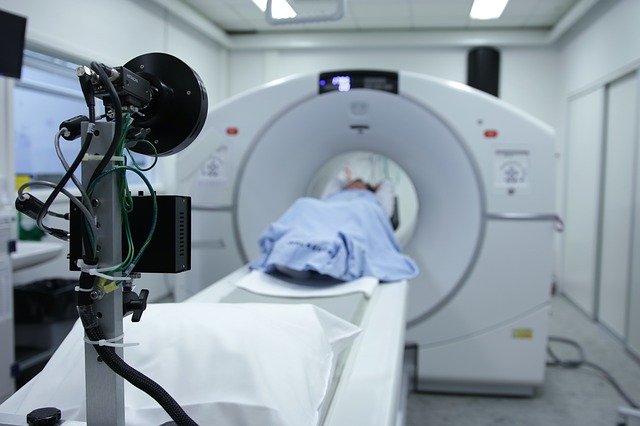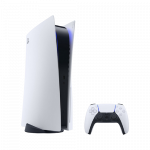Before, patient registration and data monitoring in the healthcare sector were complicated to handle and perform. Good news! The complexity of the process has led to the development of medical technology.
In the past years, patients needed to travel for hours for a consultation. In this 21st century, people can undergo a full consultation in the comfort of their homes. Credit goes to the industry’s technological advancements.

Now, what are the technological innovations in healthcare? Here are 10 different types of cutting-edge medical technologies that are currently being used or developed. Each of these technologies has the potential to change medicine as we know it. Which one is your favorite?
Table of Contents
Types of Medical Technologies
The Electronic Health Record
The electronic health record is one of the best technological advancements in healthcare. Once integrated into hospital operation, the EHR has been found to help medical professionals provide the best care for patients. That’s not all! The use of EHR has led to the centralization of patient information.
With all patient data in one place, it is easier for doctors to make informed decisions about treatments and medications. In addition, EHRs can be used to track a patient’s progress over time, allowing for more personalized care. Ultimately, the electronic health record is a powerful tool that can help to improve the quality of care for patients.
mHealth
mHealth, or mobile health, is a term used for the practice of medicine and public health supported by mobile devices. In 2019, the mHealth market was valued at $20.7 billion and it continues to grow in popularity.
mHealth is a great tool for healthcare providers as it gives them access to information and allows patients to be more involved in their own treatment. The use of mHealth apps and devices can help to improve patient outcomes by providing them with more control over their health.
mHealth can also help to reduce the cost of healthcare by making it more efficient. There are many different mHealth apps and devices available, so there is sure to be one that meets your needs.
Telemedicine or Telehealth
Aside from mobile health, telemedicine has been gaining massive popularity in corners of the world. Used in rural settings, telemedicine allows patients to be treated without having to pay for office visits or other unnecessary expenses, and it also allows them to continue working without interruptions.
In addition, telemedicine can help to reduce the spread of infectious diseases by allowing patients to be treated from home. Telemedicine is also becoming increasingly popular as a way to provide care for elderly or disabled patients who may have difficulty getting to a doctor’s office. With the help of telemedicine, these patients can receive the care they need without having to leave their homes.
Portal Technology
Nowadays, patients are active players when it comes to their healthcare, and the use of portal technology can play a critical role. Why is it different from other tools? It is so since it allows different parties to access medical records online. This includes the patient, their care team, as well as specialists.
Another reason why this technology is important is that it enables patients to be more educated and involved in their care. They are able to view test results, appointment schedules, and medication lists online. They can also message their care team, request prescription refills, and pay bills electronically. Portal technology is empowering patients and revolutionizing the healthcare industry.
Self-Service Kiosks
Just like portal technology, self-service kiosks can streamline a variety of processes in healthcare, including hospital registration. This avoids the need to hire additional staff while making the registration comfortable. Aside from that, self-service kiosks make co-pays and checking of identification easier than ever. But it takes time before medical professionals use it effectively.
However, it may take some time before medical professionals are able to fully utilize self-service kiosks effectively. In the meantime, patients can expect to see more of these kiosks popping up in healthcare settings.
Remote Monitoring Tools
Since 2002, remote monitoring tools have been used to effectively reduce unnecessary costs, minimize unnecessary visits to physicians, monitor patients’ health with a certified medical professional, save time, and make all monitoring procedures seamless.
These tools have been proven to be beneficial for both patients and physicians. Patients are able to receive quality care without having to travel to see a physician and physicians are able to save time by not having to see patients in person. This type of care is convenient for both parties and has been shown to be just as effective as in-person care.
Sensors & Wearable Technology
A recent transparent Market Research report shows that the market for wearable medical devices has grown to at least 16.4 % every year. This is likely due to the fact that hospitals are turning to sensors and wearable technology because they are the perfect tool to collect data without any inconvenience.
Patients can go about their daily lives while wearing these devices, and hospitals can get accurate information about their condition without having to bother them. In addition, wearable medical devices are becoming more affordable, making them accessible to a wider range of patients. With the continued growth of the wearable medical device market, it is clear that these devices are here to stay.
Smartwatches and smart glasses are two of the most popular types of wearable technology.
Wireless Communication
Before, hospitals used overhead pagers and beepers. In today’s high-tech world, it’s hard to imagine a time when hospitals didn’t use instant messaging platforms to communicate. After all, these platforms offer a convenient way for staff to stay in touch with one another, whether they’re in the same room or on opposite ends of the hospital.
Not only that, but they also allow for quick and easy communication of important information, such as lab results or alerts. In fact, many hospitals now rely entirely on instant messaging platforms like Vocera Messaging to keep their staff connected and informed.
Real-Time Locating Services
For many years, hospitals have spent so much time identifying and addressing potential problem areas, and real-time location services can be a lifesaver, according to experts. Reliable locating solutions also ensure the flexibility that physicians and patients deserve.
Real-time location services (RTLS) are being increasingly adopted by hospitals as a means of better-locating staff, patients, and assets. The technology uses wireless tags to track the location of people and things in real-time, allowing for more efficient utilization of hospital resources.
In addition to reducing costs, RTLS can also improve patient safety and care quality. For example, if a patient falls or wanders outside of their room, RTLS can quickly alert staff so that they can provide assistance.
The technology can also be used to track the location of medical equipment and ensure that it is properly sterilized between uses. Ultimately, RTLS has the potential to transform the way hospitals operate, making them more efficient and effective at delivering care.
Pharmacogenomics or Genome Sequencing
Personalized medicine is a rapidly growing trend in healthcare that promises many benefits in terms of diagnostic accuracy and efficiency. Pharmacogenomics, for example, is a field of study that uses an individual’s genetic information to tailor their medication regime, and it has the potential to eliminate billions of dollars in misdiagnoses, adverse drug events, and other costs.
Furthermore, personalized medicine can also help to improve patient compliance rates by ensuring that patients receive the most appropriate treatment for their individual needs. As more and more research is conducted in this area, personalized medicine will likely become increasingly commonplace, bringing improved health outcomes for patients around the world.



